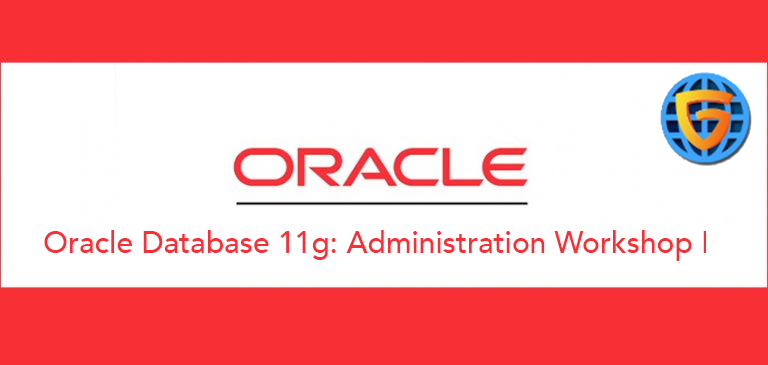Duration : 60Hours.
Certificate: Certificate of Participation on ‘’Database 11g Administration’’
Oracle is an American Multinational Computer Technology corporation which sells software for
database administration and cloud engineered system. Larry Ellison co-founded Oracle Corporation in
1977 with Bob Miner and Ed Oates under the name Software Development Laboratories.
Basically from the term oracle we all know that it is related to database. We mainly used its database
software to maintain databases of a particular company or any organization. The way by which we
maintain database is by SQL statement and queries.

So it may comes to your mind that what is SQL. SQL which is the abbreviated form of Structured
Query Language is used to modify database, insert records into database, delete records and to update
the database according to the need. We have to use queries in SQL to perform all this task. SQL
queries are statements which are gets executed and perform the database operation.
There are mainly three version of oracle:
- Oracle 12c version 12.2.0.1
- Oracle 12c version 12.1.0.2
- Oracle 11g version 11.2.0.4
The Oracle Database 12c is a high-performance, enterprise-class database. According to Oracle, this
is the first database designed for the cloud. Oracle Database 12c also introduces 500 new features to
the database, most notably pluggable databases and multitenant architecture. Oracle 11g is the older
version of oracle RDBMS and has no pluggable database while oracle 12c is a newer version of oracle
designed for the cloud system and management of cloud and has pluggable databases.
1. # Oracle Database Architecture Overview
2. # Oracle ASM Architecture Overview
3. # Process Architecture
4. # Memory structures
5. # Logical and physical storage structures
6. # ASM storage components
1. # Tasks of an Oracle Database Administrator
2. # Tools Used to Administer an Oracle Database
3. # Installation: System Requirements
4. # Oracle Universal Installer (OUI)
5. # Installing Oracle Grid Infrastructure
6. # Installing Oracle Database Software
7. # Silent Install
1. # Planning the Database
2. # Using the DBCA to Create a Database
3. # Password Management
4. # Creating a Database Design Template
5. # Using the DBCA to Delete a Database
1. # Start and stop the Oracle database and components
2. # Use Oracle Enterprise Manager
3. # Access a database with SQLPlus
4. # Modify database installation parameters
5. # Describe the stages of database startup
6. # Describe database shutdown options
7. # View the alert log
8. # Access dynamic performance views
1. # Set up initialization parameter files for ASM instance
2. # Start up and shut down ASM instances
3. # Administer ASM disk groups
1. # Use Enterprise Manager to create and configure the Listener
2. # Enable Oracle Restart to monitor the listener
3. # Use tnsping to test Oracle Net connectivity
4. # Identify when to use shared servers and when to use dedicated servers
1. # Storage Structures
2. # How Table Data Is Stored
3. # Anatomy of a Database Block
4. # Space Management in Tablespaces
5. # Tablespaces in the Preconfigured Database
6. # Actions with Tablespaces
7. # Oracle Managed Files (OMF)
1. # Database User Accounts
2. # Predefined Administrative Accounts
3. # Benefits of Roles
4. # Predefined Roles
5. # Implementing Profiles
1. # Data Concurrency
2. # Enqueue Mechanism
3. # Resolving Lock Conflicts
4. # Deadlocks
1. # Data Manipulation
2. # Transactions and Undo Data
3. # Undo Data Versus Redo Data
4. # Configuring Undo Retention
1. # Describe DBA responsibilities for security
2. # Enable standard database auditing
3. # Specify audit options
4. # Review audit information
5. # Maintain the audit trail
1. # Manage optimizer statistics
2. # Manage the Automatic Workload Repository (AWR)
3. # Use the Automatic Database Diagnostic Monitor (ADDM)
4. # Describe and use the advisory framework
5. # Set alert thresholds
6. # Use server-generated alerts
7. # Use automated tasks
1. # Performance Monitoring
2. # Managing Memory Components
3. # Enabling Automatic Memory Management (AMM)
4. # Automatic Shared Memory Advisor
5. # Using Memory Advisors
6. # Dynamic Performance Statistics
7. # Troubleshooting and Tuning Views
8. # Invalid and Unusable Objects
1. # Part of Your Job
2. # Statement Failure
3. # User Error
4. # Understanding Instance Recovery
5. # Phases of Instance Recovery
6. # Using the MTTR Advisor
7. # Media Failure
8. # Archive Log Files
1. # Backup Solutions: Overview
2. # Oracle Secure Backup
3. # User-Managed Backup
4. # Terminology
5. # Recovery Manager (RMAN)
6. # Configuring Backup Settings
7. # Backing Up the Control File to a Trace File
8. # Monitoring the Flash Recovery Area
1. # Opening a Database
2. # Data Recovery Advisor
3. # Loss of a Control File
4. # Loss of a Redo Log File
5. # Data Recovery Advisor
6. # Data Failures
7. # Listing Data Failures
8. # Data Recovery Advisor Views
1. # Describe ways to move data
2. # Create and use directory objects
3. # Use SQL*Loader to move data
4. # Use external tables to move data
5. # General architecture of Oracle Data Pump
6. # Use Data Pump export and import to move data